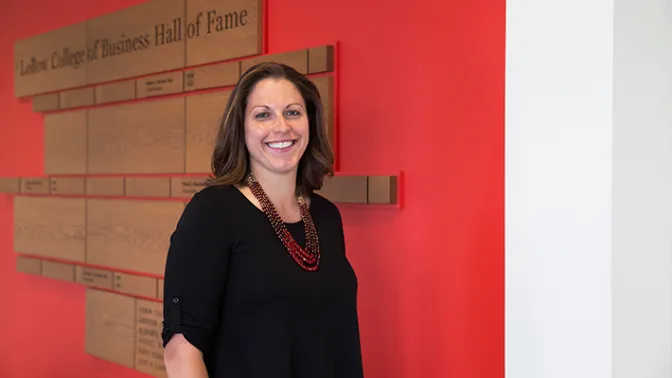
Building a Better Team, One Interpersonal Interaction at a Time
The present — and the future — of work is in multiteam systems. This type of work arrangement involves a group of separate teams working toward individual goals while interfacing interdependently with one another to accomplish some larger, overarching goal for the entire system. These work arrangements are increasingly utilized in knowledge-based work, such as product development and project delivery.
These teams, whatever field they’re working in, need to coordinate and interface with other teams at the system level and, as Professor and Department Head of Management Jonathan Ziegert, PhD, notes, it’s an arrangement that’s been in use for years, but it’s been underexamined by researchers.
“Previous research has explored this unique form of organizing, but the dynamics and degrees of interdependence are still ripe for exploration,” he says.
Recently published research by Ziegert and Associate Professor of Management Christian Resick, PhD, seeks to identify the interaction patterns between these kinds of teams and to understand how informal coordination mechanisms influence multiteam system effectiveness. The study, co-authored with Andrew P. Knight, PhD, of Washington University in St. Louis, and Katrina Graham, PhD ’15, of Suffolk University, also looks at how interpersonal interactions within and between teams influence conflict and, ultimately, team and system performance.
In this study, funded through a Lockheed Martin Leadership Development grant to infuse leadership and team concepts into courses at Drexel’s College of Engineering, teams of engineering students were tasked with assembling Rube Goldberg machines, devices designed to move energy from one side of the machine to the other to complete a rather mundane task. For the project, individual teams needed to interface together to combine their particular machines to form one large system Rube Goldberg machine with the goal of adding a spoon of sugar to a coffee cup.
“In areas like product innovation and development, it’s not one person or one team working on all aspects — it’s big, broad and complex, and all of the pieces need to fit together,” Resick said. “This really mirrors the settings that engineering students are going to be moving into when they graduate.”
The authors tested their theoretical model in a study of 44 multiteam systems, composed of 295 teams and 930 members, charged with developing these team- and system-level Rube Goldberg machines over 11 weeks. Informal coordination — that is, direct, mutual and ad hoc interactions between people — emerged as a key mechanism in facilitating the effectiveness of each individual team, and the overall project.
“We wanted to understand how these informal interactions influence both team- and system-level success, and the key is a balance between internal and external communication within and between teams,” Ziegert said. “It’s really important in addressing the performance tensions between the team-level and the system-level goals.”
The authors also find that balancing those communication and coordination patterns was critical to minimizing conflict and performance tensions within teams, enabling them to accomplish their goals more successfully. They find that while there are strong benefits of interacting with your team and with directly adjacent teams in the system, there are fewer benefits to forming relationships and interacting further downstream.
“It takes time and effort, the value-add is not clear and there’s a potential of increasing errors or conflicts with your team,” Ziegert says.
Appropriate to an engineering and science context, there was a technological twist in the study with how the researchers measured these interactions: Bluetooth sensors that the participants wore like name badges when working on the task. Signal strength showed how close in proximity people were to one another, and researchers used that data to quantify how much each team member was interacting with others both within the team and spanning boundaries to interact with other teams in the system.
“It’s a story of how social networks and relationships serve as a really important mechanism for informal coordination and for ensuring the flow of knowledge to the correct places,” Resick said. “We’re training students to work in these types of arrangements, so having this type of knowledge is going to be important to them.”
Ziegert and Resick also note that imbalanced systems have an error rate twice as high as balanced ones such that a focus of interactions primarily within the team or between teams resulted in nearly double the errors of systems compared to when teams balanced internal and external interactions.
“No one wants to be on a team where there’s core, relational conflict,” Ziegert said. “By balancing these interactions and being attentive to where they’re placed, you can reduce team conflict, which is a benefit for teams and their ultimate performance.”
“Addressing Performance Tensions in Multiteam Systems: Balancing Informal Mechanisms of Coordination Within and Between Teams” was published in Feb. 2022 in the Academy of Management Journal. You can view the abstract here; the full paper is available to faculty, students and staff through Drexel Libraries.




